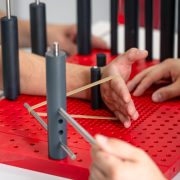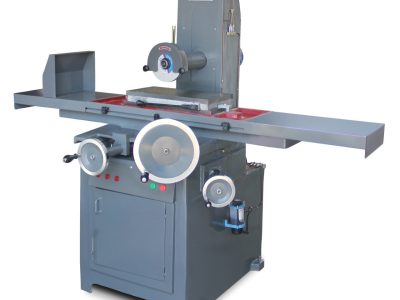In modern manufacturing, precision and productivity are crucial to staying competitive. Among the many machines that contribute to efficient metalworking, hydraulic surface grinding machines play an essential role. They are used to create extremely smooth, accurate, and uniform finishes on flat surfaces — a key requirement in industries like automotive, aerospace, tool-making, and heavy machinery. By combining hydraulic power with advanced grinding technology, these machines provide consistent performance and superior quality in material finishing.
Understanding Hydraulic Surface Grinding Machines
A hydraulic surface grinding machine is a type of precision tool that uses an abrasive wheel to remove small amounts of material from the surface of a workpiece. The hydraulic system automates key operations, such as table movement and pressure control, ensuring smooth, vibration-free operation. Unlike manually operated grinders, hydraulic systems enhance both accuracy and efficiency, allowing for high-speed and uniform grinding.
These machines come with different configurations, such as horizontal spindle and vertical spindle models, depending on the application. The hydraulic system enables effortless feeding and movement, reducing operator fatigue and human error while improving production consistency.
Precision and Efficiency in Industrial Applications
Hydraulic surface grinding machines are indispensable in industries that demand extreme accuracy. In the automotive sector, for example, components like engine blocks, cylinder heads, and transmission parts require flawless surface finishes to ensure performance and longevity. The aerospace industry also relies on these machines to maintain tight tolerances on components made from hard metals and alloys.
In tool and die manufacturing, the grinding process is vital for creating smooth, flat, and defect-free surfaces that serve as molds for producing thousands of identical components. Similarly, in machine tool production, surface grinders are used to achieve exact flatness and parallelism — key factors that directly influence the quality of the final product.
Benefits of Hydraulic Surface Grinding Machines
One of the primary benefits of hydraulic surface grinding machines is their automation and ease of operation. The hydraulic mechanism minimizes manual intervention, leading to consistent grinding pressure and smooth table movements. This results in higher precision and better surface quality compared to conventional grinders.
Another advantage is reduced downtime and maintenance. The hydraulic system ensures steady lubrication and cooling, preventing excessive wear and tear on components. This enhances machine life and reliability, which is crucial for industries operating under continuous production schedules.
Additionally, these machines support high-volume production without compromising on quality. With hydraulic control, repeatable accuracy is maintained across large batches of workpieces, saving both time and material. The use of hydraulic power also makes these machines energy-efficient and quieter, improving workplace safety and comfort.
Technological Advancements and Features
Modern hydraulic surface grinding machines come equipped with advanced features that improve performance and usability. Digital control panels allow operators to set grinding parameters precisely, while automatic lubrication and cooling systems maintain consistent operation. Some models integrate CNC (Computer Numerical Control) for even greater accuracy and programmability, enabling multi-step grinding processes to be executed seamlessly.
Furthermore, hydraulic systems now use eco-friendly fluids and energy-saving mechanisms to align with industrial sustainability goals. The combination of technology and hydraulic power ensures that industries can achieve both productivity and environmental responsibility.
Choosing the Right Hydraulic Surface Grinding Machine
When selecting a hydraulic surface grinder, industries must consider factors such as table size, spindle power, hydraulic capacity, and automation level. The choice depends on the type of material being processed, desired surface finish, and production volume. Reputable manufacturers offer customized machines tailored to specific industrial needs, ensuring compatibility with existing production systems.
Regular maintenance, such as checking hydraulic fluid levels, filter cleaning, and wheel dressing, helps maintain machine efficiency and extend lifespan. Operators should also receive proper training to ensure safe and effective use of hydraulic surface grinders.
Conclusion
Hydraulic surface grinding machines have revolutionized industrial metal finishing by combining precision, speed, and reliability. They ensure flawless surfaces, enhance production efficiency, and reduce operational costs — making them indispensable tools across various sectors. As industries continue to evolve, the demand for high-performance, automated, and environmentally friendly grinding solutions will only increase. Investing in a quality hydraulic surface grinding machine is not just a step toward superior finishing but also a commitment to long-term industrial excellence.
















Comments